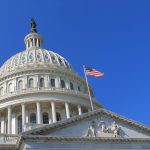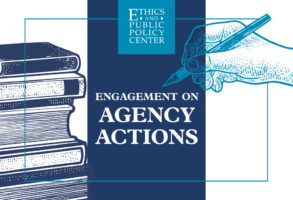Published July 10, 2014
A primary aim of the Patient Protection and Affordable Care Act (ACA) is to expand insurance coverage, especially among households with lower incomes. The Congressional Budget Office (CBO) projects that about one-third of the additional insurance coverage expected to occur because of the law will come from expansion of the existing, unreformed Medicaid program. The rest of the coverage expansion will come from enrolling millions of people into subsidized insurance offerings on the ACA exchanges — offerings that have strong similarities to Medicaid insurance.
Unfortunately, ample evidence demonstrates that this kind of insurance model leaves the poor and lower-income households with inadequate access to health care. The networks of physicians and hospitals willing to serve large numbers of Medicaid patients have been very constrained for many years, meaning access problems will only worsen when more people enroll and begin using the same overburdened networks of clinics and physician practices.
It does not have to be this way. It is possible to expand insurance coverage for the poor and lower-income households without reliance on the flawed Medicaid insurance model. Opponents of the ACA should embrace plans to replace the current law with reforms that would give the poor real choices among a variety of competing insurance offerings, including the same insurance plans that middle-class families enroll in today. Specifically, we propose a three-part plan that includes a flexible, uniform tax credit for all those who lack employer-based coverage; deregulation of Medicaid; and improved safety-net primary and preventive care.
Medicaid’s Shortcomings
Since its creation in 1965, Medicaid has mushroomed into a massive federal-state health and social welfare program, providing a wide array of services to a diverse population. Total federal and statespending on the program was about $460 billion in 2013, and there were about 67 million people enrolled in 2011. Here, we consider Medicaid’s role in providing nondisabled and nonelderly enrollees access to medical services typically covered by health insurance, including doctor visits, hospitalization services, and prescription drugs.
Insurance, but inadequate access. From the outset of the program, the poor and low-income households enrolled in Medicaid have too often had inadequate access to necessary services. Low payment rates and burdensome administrative requirements have discouraged health care providers from accepting Medicaid patients. Adding millions more people to an unreformed program that has been struggling with access problems for five decades is an unsatisfactory approach to coverage expansion, to put it mildly.
According to the government’s health insurance actuaries, Medicaid pays about 60 percent of what private insurers pay for physician care. Not surprisingly, low pay discourages many providers from participating in Medicaid.
A 2012 study reported that about one-third of physicians are not seeing new Medicaid patients. One2007 study found that three-quarters of all physicians received higher reimbursement rates from their uninsured patients paying out of pocket than from their Medicaid patients. Primary-care physicians in Washington State reported that they had 75 percent more problems obtaining a specialty referral for Medicaid patients than for those with commercial coverage.
The inability to easily access a broad array of physician services has real consequences. Many studiesexamining health outcomes for Medicaid enrollees have found the quality of care they received to be below that of those receiving private insurance, and sometimes even below that of the uninsured.
Poor outcomes. Two studies are notable because they control for patient characteristics and other factors that contribute to poorer health outcomes independently of the impact of Medicaid. A University of Virginia analysis of 893,658 patients undergoing major surgical operations adjusted for the effects of patient, hospital, and other factors on outcomes. It found that Medicaid patients needing surgery were 13 percent more likely to die than the uninsured and 97 percent more likely to die than those with private insurance.
Another recent analysis studied the Oregon Health Insurance Experiment, which randomly selected more than 12,000 individuals to enroll in Medicaid or remain uninsured. It found that the program’s participants were in no better health than their uninsured counterparts on key measures of physical health, including blood pressure, cholesterol, and blood sugar levels. Moreover, Medicaid enrollees with hypertension or high cholesterol levels were no more likely to use medications for those conditions than the uninsured. The one favorable finding was a lower rate of depression among Medicaid enrollees.
Such evidence raises serious questions about the wisdom of expanding Medicaid eligibility. The program may provide adequate access to care for routine health problems, although the Oregon study suggests otherwise. Individuals with serious health conditions are likely to face more serious consequences as a direct result of Medicaid’s shortcomings.
The ACA Builds on the Flawed Medicaid Model
The ACA was written on the assumption that every state would have no choice but to expand Medicaid eligibility to all residents with incomes below 138 percent of the federal poverty line. States that did not adopt the expansion were set to lose all federal funding for Medicaid. However, the Supreme Court ruled in June 2012 that this penalty was too heavy-handed and violated constitutional principles. As a consequence, the Medicaid expansion is now voluntary at the state level.
Nonetheless, much of the ACA’s projected increase in insurance enrollment is still expected to come in the form of higher Medicaid enrollment. The law offers a financial incentive to states that expand program eligibility: full federal funding will be available to cover the cost of services used by newly eligible Medicaid enrollees. That match is scheduled to be reduced starting in 2017, reaching 90 percent of costs in 2020 and thereafter. The cost to insure those who were eligible under pre-ACA rules will continue to be partially covered by a federal payment, averaging 58 percent of the cost.
Twenty-six states plus the District of Columbia have adopted the expansion thus far, and several other states are actively considering it. CBO’s current estimates show enrollment in Medicaid increasing by 7 million people in 2014 and, ultimately, by 13 million people within a few years.
The Obama administration has been pressuring states to choose between this model of impaired access to care and no insurance at all for those who were not eligible for Medicaid before the enactment of the ACA. Several states have sought demonstration waivers from the US Department of Health and Human Services (HHS) to modify their programs while expanding eligibility, but HHS has sharply limited how far the states can go in trying new approaches.
Arkansas: less change than meets the eye. Arkansas, often touted as highly innovative in its approach to expanding Medicaid, has not broken the mold. Under a state waiver, Arkansas uses Medicaid funds to subsidize health insurance for adults who are newly eligible under the Medicaid expansion, and the coverage looks just like Medicaid. The full Medicaid state plan benefits are required, beneficiaries do not pay any premiums, and beneficiaries are responsible for little to none of the cost of their care (in line with standard Medicaid rules).
The Arkansas demonstration project is supposed to be budget neutral, with the cost to cover the expansion population no higher than it would have been without the waiver. But cost overruns have been reported in each of the first five months of the demonstration, in part because of the failure to account for additional benefits required by the ACA. Arkansas is likely to ask for a federal bailout to cover the extra cost of an otherwise routine Medicaid expansion.
Exchange plans: Medicaid by another name. The ACA also expands insurance coverage by providing subsidized premiums for insurance purchased on the newly constructed federal and state “exchanges.” The subsidies are available to families with incomes between 100 and 400 percent of the federal poverty line, or between $23,850 and $95,400 for a family of four. Anyone who is eligible for Medicaid is not eligible for “premium credits” on the insurance exchanges.
It has become increasingly clear since health plan exchange offerings were unveiled in fall 2013 that they bear a strong resemblance to Medicaid plans. In many cases, they pay low reimbursement rates for medical care, resulting in narrow networks of physicians and hospitals participating in the plans.
Enrollees in these insurance plans are only now realizing that their newly secured coverage does not guarantee them timely access to many physicians and hospitals in their communities. For instance, the renowned University of Texas MD Anderson Cancer Center participates in fewer than half of the insurance plans offered on the exchange in the Houston area.
A Three-Part Plan to Provide Better Care for the Poor
The insurance status of poor and low-income households was inadequate before enactment of the ACA. There were too many uninsured households, and the rules governing the insurance system left too many cracks through which persons with expensive preexisting conditions could fall. Reform of American health care was necessary.
What is not necessary is much of the regulatory burden and higher budgetary costs and premiums that come with the ACA. Public opinion polls have consistently shown many Americans are uneasy with the new law for this exact reason.
The public’s continued unease with the ACA presents an opportunity for opponents of law. Perhaps more than any time in recent history, the electorate is open to hearing about plans for reforming health care that do not rely on excessive federal control.
But this opportunity also comes with some additional burden, as it will not be sufficient for opponents to simply propose a return to the pre-ACA status quo. Opponents need a compelling plan to replace the ACA with a better approach to reform, including a better way to provide poor and low-income households with access to care. This requires three steps.
A universal tax credit encompassing the Medicaid population. First, there needs to be a universal, refundable tax credit for any household without access to employer-financed insurance, including the Medicaid population. Providing the same tax credit to the poor and middle class is the first step to bringing the poor into mainstream medical care.
The value of the tax credit should be sufficient to ensure that all Americans without employer coverage can get private insurance protection against large medical expenses. The use of these tax credits would be far more flexible than under the ACA, with consumers allowed to enroll in health savings accounts (HSAs) and other offerings approved by state insurance regulators.
Providing a uniform credit that is also available to the middle class would reduce the work disincentives embedded in the ACA subsidy program by eliminating the drawdown of subsidies as persons with moderate incomes move into higher-paying jobs. According to the CBO, a family of four would face a 13 percent implicit tax under the ACA if it raised its income from 150 percent ($35,775) to 200 percent ($47,700) of the federal poverty line.
Combined with income and payroll taxes and the loss of other government assistance, many families could see total implicit tax rates well above 50 percent. CBO estimates that the workforce will shrink by 2.5 million Americans over the next 10 years because of the work disincentives embedded within the ACA.
A refundable tax credit made available to everyone purchasing insurance on the individual market would help level the playing field with those receiving generous tax benefits because they purchase coverage through their employers. Such a credit would help with the cost of basic coverage, but most people would likely want to add funds for more comprehensive benefits. However, low-income people may not be able to afford better coverage without additional help—a problem that can be resolved by reforming Medicaid.
Deregulation of Medicaid. Consequently, the second key piece of a reform plan to provide better care for the poor is deregulation of Medicaid so states can use the program’s resources to supplement the base federal tax credit. In effect, Medicaid should be converted into premium and cost-sharing support. Medicaid program participants, rather than state or federal bureaucrats, would then use the assistance to select their insurance plan from among competing private options, the Medicaid program, or, if available, an employer plan.
This approach promotes plan competition and responsiveness to actual consumer needs and preferences. The very poor would get sufficient help to ensure essentially free health care. As incomes rise, states would be allowed to design the subsidies to require modest premium and cost-sharing from those participating in the program. This would ensure some cost sensitivity among enrollees.
Senators Richard Burr (R-NC), Tom Coburn (R-OK), and Orrin Hatch (R-UT) proposed a version of this tax credit and Medicaid reform in their Patient Choice, Affordability, Responsibility, and Empowerment Act, with the credit available to anyone not working for a large employer. Under that proposal, individuals with incomes above about 300 percent of the poverty line would not be eligible for the credit, although the current tax exclusion would remain in place for persons enrolled in job-based plans.
The 2017 Project proposes a similar fixed, refundable tax credit for anyone purchasing individual coverage while also leaving in place the tax exclusion for employer-sponsored insurance. The credits available under this plan would not be phased out for higher income households, and thus the plan would avoid some of the work disincentives associated with income-tested credits. According to their analysis, such an approach could make comprehensive coverage widely affordable with less cost to the taxpayer than the ACA.
Allowing Medicaid participants to enroll in the same insurance plans available to higher-income households who also buy coverage outside the employer system could likewise improve care for the poor by allowing some enrollees to stay in the same insurance plan even as their incomes rise. Medicaid participants often lose their insurance, and sometimes also their doctors, when they take a higher-paying job and become ineligible for the program. Integrating Medicaid into the private insurance system used by the middle class will eliminate some of the disruption in insurance coverage that occurs today when the poor begin to climb the income ladder.
Bolstering safety-net primary care. A third key feature of a better approach to caring for the poor is a renewed commitment to improving safety-net primary and preventive care. Today, the federal government invests heavily in 9,000 federally chartered community health centers nationwide through direct appropriations, a new mandatory funding stream authorized under the ACA, and minimum required reimbursement levels from the Medicaid program. This funding has allowed these clinics to serve more than 20 million patients annually.
But despite this funding and the presence of these clinics, the poor continue to suffer worse health outcomes than other Americans, and far worse than they should. According to a 2010 Gallup survey, 16.1 percent of those living in poor households suffered from diabetes, compared to 9.4 percent of those from higher-income families.
The reasons for these differing outcomes are varied and complex, including environmental factors such as substandard housing and language barriers. Nonetheless, it is important to recognize that the health status of the poor—which is the ultimate concern here—is unlikely to appreciably improve with insurance coverage expansion alone; it is also necessary to improve how the poor seek out and use health services.
Some testing of new approaches is appropriate at this point. Instead of relying exclusively on the existing quasi-public model, the federal government should explore the use of competitive bidding and private clinics to improve the health status of poor households. The emphasis should be on using new technology and finding innovative ways of delivering services to hard-to-reach households, and performance should be measured based on key metrics of the patient’s health status, such as blood pressure and blood glucose levels.
The Indiana Model: A Successful Approach Being Watered Down Under The ACA
Indiana is currently attempting to navigate a middle course on insurance for the poor. The state has so far rejected adoption of a straight Medicaid expansion, as pushed by the Obama administration. Governor Mike Pence recently announced his willingness to expand Medicaid coverage to 138 percent of poverty line so long as the state fundamentally transforms the program. Unfortunately, the proposal fails to retain key reform elements that promote consumer responsibility and fiscal restraint — elements that have been successfully tested under the Healthy Indiana Plan (HIP).
The original HIP demonstration project expanded Medicaid eligibility to adults with incomes up to 200 percent of the federal poverty level. New enrollees are offered high-deductible health coverage combined with a Personal Wellness and Responsibility (POWER) account, similar to an HSA, instead of traditional Medicaid.
In place since 2008, the demonstration program has about 40,000 enrollees who must match state deposits into their accounts with some of their own private savings. The participants use these accounts to pay for medical care below the insurance plan’s deductible.
Independent evaluations of the plan have shown that the program is working very well. According to an evaluation conducted by Mathematica Policy Research, the low-income participants in the Indiana initiative found the HSA approach attractive. More than 90 percent of those who were eligible for HIP in 2008 and 2009 made their first monthly contribution, which is necessary to enroll in the program. In the first two years, only 3 percent of enrollees dropped out because they failed to pay their monthly contributions.
HIP has also been effective in promoting the use of cost-effective services. For example, 31 percent of HIP enrollees visited the emergency room in 2012, compared to 38 percent of adult enrollees in Indiana’s traditional Medicaid-managed care program. In addition, 5 percent of HIP beneficiaries decided to go to an urgent care center or their regular doctor to seek care because of the co-pay required for nonemergency use of the emergency room.
Gov. Pence has proposed to expand the HIP approach to the entire nonelderly, nondisabled population on Medicaid in Indiana and to expand Medicaid eligibility up to the ACA’s 138 percent limit. However, enrollees below 100 percent of the federal poverty line would no longer be required to contribute to their POWER accounts under HIP 2.0. The proposal offers incentives for individuals to instead opt to contribute to their POWER accounts in return for a richer benefit package, but the default is effectively traditional Medicaid.
The fact that Indiana is now in negotiations with HHS to move ahead with this plan reveals the drawbacks in the ACA and the merits of a more flexible alternative. Indiana has pioneered the use of HSA accounts and high-deductible plans to expand coverage with a decidedly consumer focus, and the results are very promising. Moreover, the proposal would not require beneficiaries to pay more than the minimal amounts allowed under current Medicaid rules. Yet, to move ahead with this approach, the state must engage in extended and nontransparent negotiations with HHS.
The alternative plan for covering the poor discussed in this paper would free the states from having to engage in extended negotiations with the HHS bureaucracy. States that want to enroll their Medicaid-eligible populations in HSA-like structures could do so without further federal approval or the inevitable strings that come with HHS-negotiated demonstration programs.
Conclusion
Enactment of the ACA has not ended the US debate over health care reform, or the debate over how to improve health care for the poor. There were many problems with providing the poor with access to care before the ACA, and the new law will not make those problems disappear.
But an alternative plan will not be easy to enact, either. For starters, providing a better, more secure, and widely accessible health system for the poor will not occur without some additional public expense. But that should not be an excuse to avoid reforming a dysfunctional system. It will just require Congress to set priorities. Higher costs for the poor can be offset by imposing more market discipline on excessively costly and inefficient public and private insurance plans.
Americans’ continuing unease about the wisdom of the ACA has created an opportunity for opponents to present their ideas for an alternative approach, including how best to provide insurance and health services to the poor. No plan to reform health care will be without political controversy, and that includes the plan presented here. But now is a particularly opportune moment to make the case that the country can care for the poor without so much reliance on central government control. This opportunity should not be missed.
James C. Capretta is a senior fellow at the Ethics and Public Policy Center and a visiting fellow at the American Enterprise Institute.








